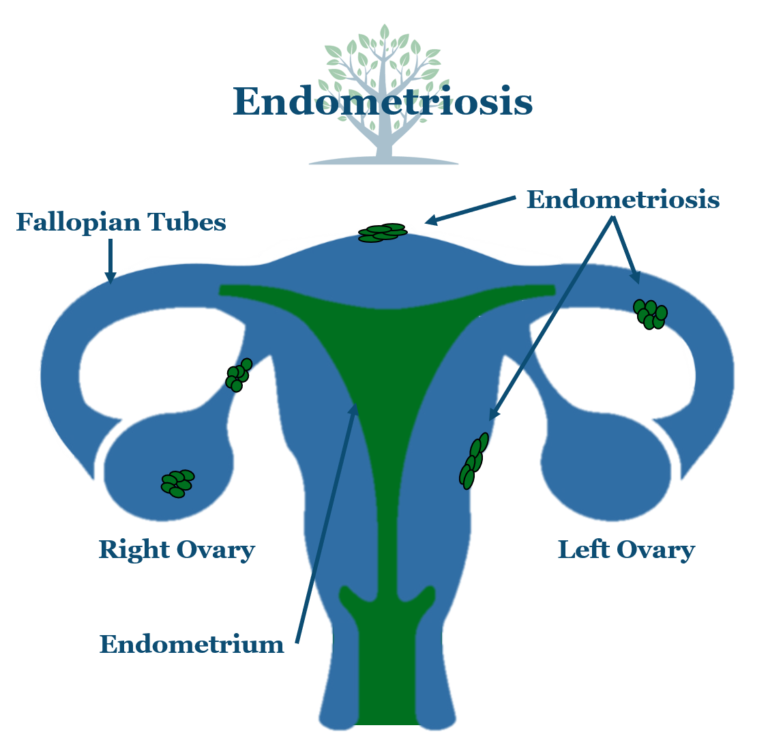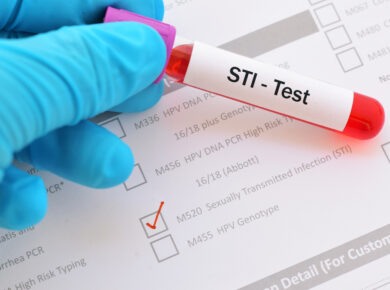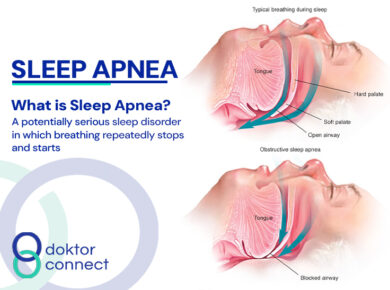Endometriosis is a condition in which tissue that lines the inside of your uterine wall grows outside the uterus. This tissue, called endometrium, causes inflammation, and sometimes scar tissue. This can be extremely painful. It’s more common than most people realize. Roughly 1 in 10 women have endometriosis. That’s about 176 million people worldwide.
Endometriosis can affect women of any age, including teenagers.
What causes endometriosis
The cause of endometriosis not known.
Several theories have been suggested, including:
- Genetics – the condition tends to run in families and affects people of certain ethnic groups more than others.
- A problem with the immune system, the body’s natural defense against illness and infection
- Endometrium cells spread through the body in the bloodstream or lymphatic system, a series of tubes and glands that form part of the immune system
It’s a condition likely caused by a combination of different factors.
What do they look like and where are they located?
They’re usually found in the pelvis or abdomen. They can grow on linings and organs, such as the fallopian tubes or ovaries. 
What are the Symptoms of Endometriosis?
The primary symptom of endometriosis is pelvic pain, often associated with menstrual periods. Although many experience cramping during their menstrual periods, those with this conditions typically describe menstrual pain far worse than usual. Pain also may increase over time.
Common signs and symptoms of include:
· Painful periods (dysmenorrhea). Pelvic pain and cramping may begin before and extend several days into a menstrual period.
· Pain with intercourse. Pain during or after sex is common.
· Pain with bowel movements or urination. You’re most likely to experience these symptoms during a menstrual period.
· Excessive bleeding. You may experience occasional heavy menstrual periods or bleeding between periods (intermenstrual bleeding).
· Infertility. Sometimes, endometriosis is first diagnosed in those seeking infertility treatment.
· Other signs and symptoms. Fatigue, diarrhea, constipation, bloating, or nausea, especially during menstrual periods.
The severity of your pain may not be a reliable indicator of the extent of your condition. You could have mild with severe pain, or advanced endometriosis with little or no pain.
How is endometriosis diagnosed:
A Pelvic Scan
An Ultrasound scan
Magnetic resonance imaging (MRI)
Laparascopy
Management of endometriosis
There’s currently no cure, but there are treatments that can help ease the symptoms.
Treatments include:
- Over-the-counter medications like, Ibuprofen and paracetamol can help relieve symptoms.
- Hormone medicines and contraceptives, including the combined pill, contraceptive patch, intrauterine system(IUS) and contraceptive implant, and a medication called gonadotrophin-releasing hormone (GnRH)
- Surgery can be done to cut away patches of endometriosis tissue
- Surgery to remove part or all of the organs affected by endometriosis, like removing part of your colon, or your appendix or womb (hysterectomy)
Summary:
Endometriosis is a chronic condition that’s idiopathic, meaning what causes it has yet to be determined. And currently, it does not have a cure. Contact your doctor if you feel the above symptoms to begin the process of getting an accurate diagnosis and eventually creating a plan based on your specific situation.






